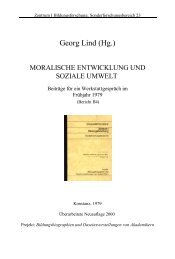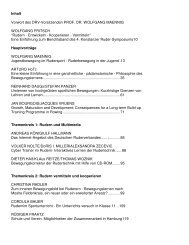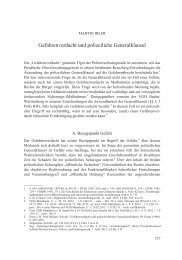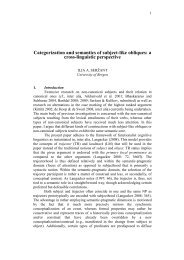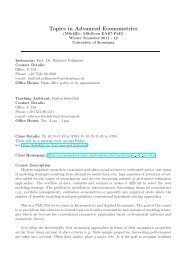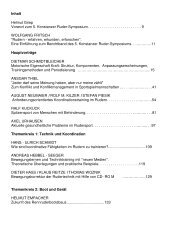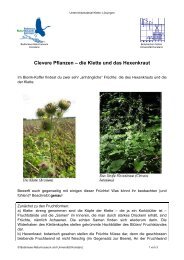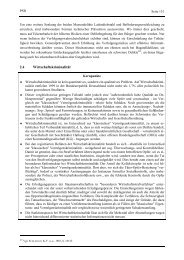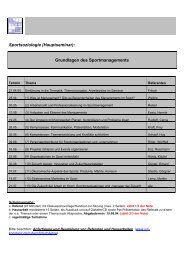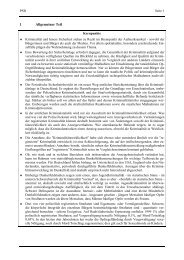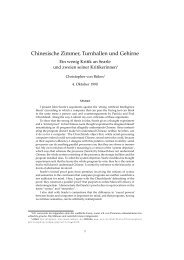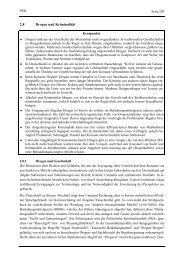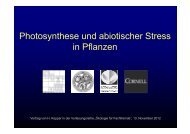Book of Abstracts Book of Abstracts - Universität Konstanz
Book of Abstracts Book of Abstracts - Universität Konstanz
Book of Abstracts Book of Abstracts - Universität Konstanz
Create successful ePaper yourself
Turn your PDF publications into a flip-book with our unique Google optimized e-Paper software.
A - 17<br />
124<br />
Experimental study <strong>of</strong> the phase transformations<br />
in molecular clusters <strong>of</strong> Ar and N2<br />
O. G. Danylchenko, S. I. Kovalenko, V. N. Samovarov<br />
B. Verkin Institute for Low Temperature Physics and Engineering, Natl. Academy <strong>of</strong> Sciences <strong>of</strong> Ukraine,<br />
47 Lenin Ave., Kharkov, 61103, Ukraine<br />
We use an electron diffraction technique to study the structure <strong>of</strong> substrate-free Ar and N2<br />
clusters and nanoparticles formed in the process <strong>of</strong> homogeneous nucleation in a supersonic jet<br />
isentropically expanding into vacuum. The average size N <strong>of</strong> aggregations varied between 5⋅10 2<br />
and 1.5⋅10 5 atoms (molecules) per cluster. The temperature <strong>of</strong> clusters and nanoparticles was<br />
T=(38±5) K in the diffraction zone.<br />
Analysis <strong>of</strong> the obtained electron-diffraction patterns has shown for the first time the existence<br />
<strong>of</strong> an amorphous phase in large rare-gas clusters (N≈600 atoms/cluster). As N increased in a<br />
relatively narrow size interval a transition occurred from the amorphous phase to the multilayer<br />
icosahedral one observed for N=1300 atoms/cluster. Formation <strong>of</strong> a crystalline face-centered<br />
cubic (fcc) structure <strong>of</strong> argon with stacking faults took place for N=3⋅10 3 atoms/cluster which is<br />
in good accordance with the previous observations [1,2]. The electron-diffraction patterns <strong>of</strong><br />
bigger clusters (N∼10 4 atoms/cluster) are shown to be characterized by hexagonal close-packed<br />
(hcp) maxima along with the fcc peaks. The intensity <strong>of</strong> the hcp peaks grew with increasing<br />
aggregation size, and for nanoparticles with N∼10 5 atoms/cluster we clearly detected (100),<br />
(101), (103), and (202) peaks characteristic <strong>of</strong> an hcp structure with intensity comparable with<br />
that <strong>of</strong> the fcc peaks.<br />
In case <strong>of</strong> linear molecules like those <strong>of</strong> nitrogen, besides the central interaction between<br />
particles there is a considerable contribution <strong>of</strong> non-central electrostatic forces which are<br />
responsible for the orientational ordering <strong>of</strong> molecules at low temperatures. The structure <strong>of</strong><br />
such clusters can differ significantly from the structure <strong>of</strong> rare-gas clusters depending on the<br />
anisotropic contribution to the total lattice energy. In contrast to amorphous argon clusters, for<br />
nitrogen beams with N≈500 molecules/cluster we first observed the formation <strong>of</strong> aggregations<br />
with multilayer icosahedral packing <strong>of</strong> molecules. The ‘wings’ <strong>of</strong> the most prominent<br />
icosahedral-phase maximum (in the region corresponding to the (100) and (101) peaks <strong>of</strong> the<br />
high-temperature β phase <strong>of</strong> N2, α-β phase transition in a bulk at T=35.6 K) are found to be<br />
curved thus indicating the presence <strong>of</strong> traces <strong>of</strong> the β phase in these clusters. As the cluster size<br />
grows at the same T in the diffraction zone, the diffraction pattern undergoes transformations<br />
and for N∼10 3 molecules/cluster it contains maxima <strong>of</strong> both cubic (α) and hcp (β) phases.<br />
Further cluster growing is accompanied by a decrease in the intensity <strong>of</strong> the cubic-phase peaks<br />
and strenghening <strong>of</strong> the hcp peaks. Clusters with N∼10 4 actually have only the high-temperature<br />
β phase.<br />
We propose and discuss a mechanism underlying the observed structural transformations in Ar<br />
and N2 which supposes cluster formation from a liquid droplet and takes into account the<br />
kinetics <strong>of</strong> phase growth when there are energy barriers between phases.<br />
References<br />
[1] I. Farges, M.F. de Feraudy, B. Roult, G. Torchet, Adv. Chem. Phys. 70, 45 (1988).<br />
[2] O.G. Danylchenko, S.I. Kovalenko, V.N. Samovarov, Low Temp. Phys. 30, 166 (2004).



